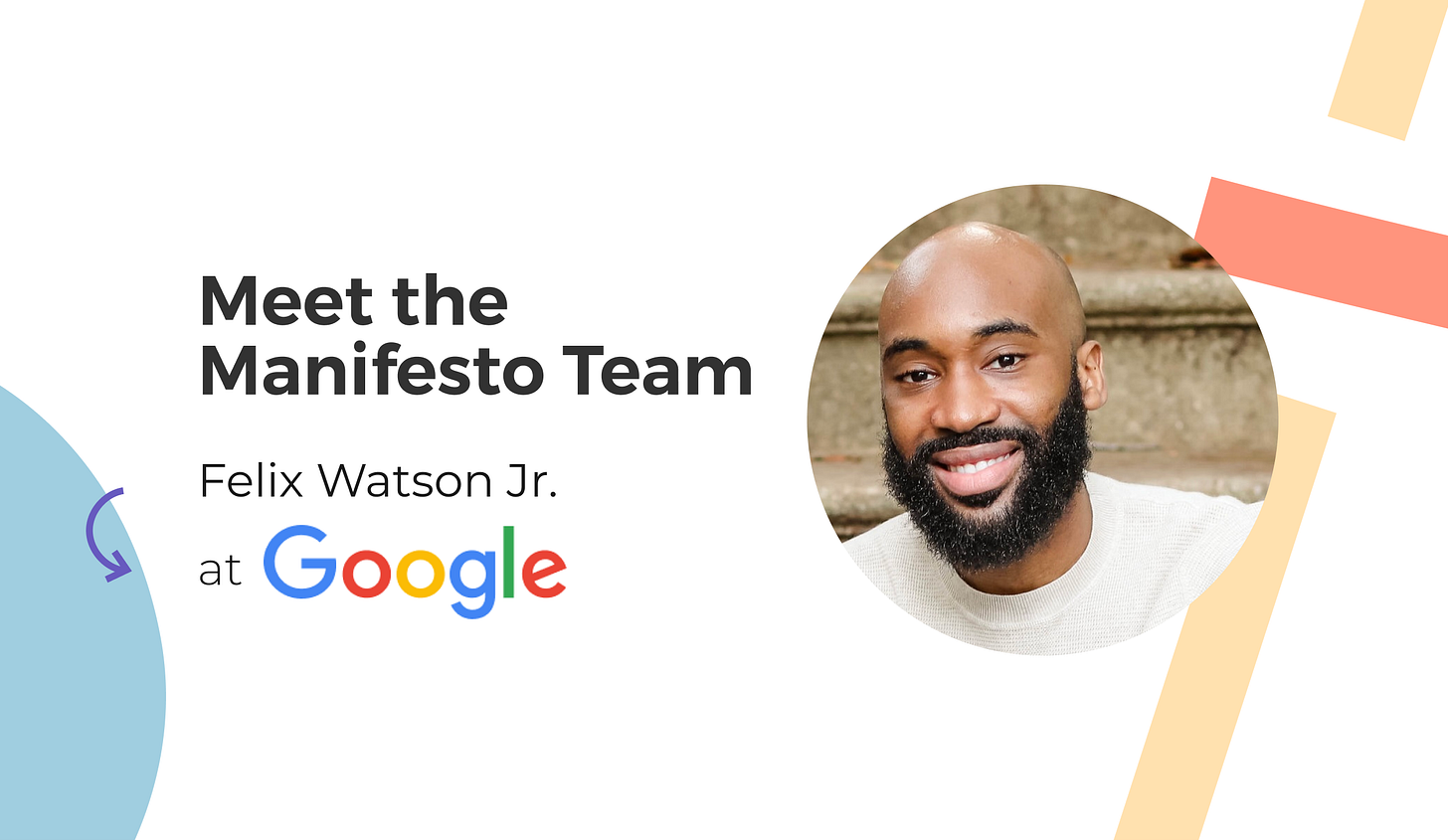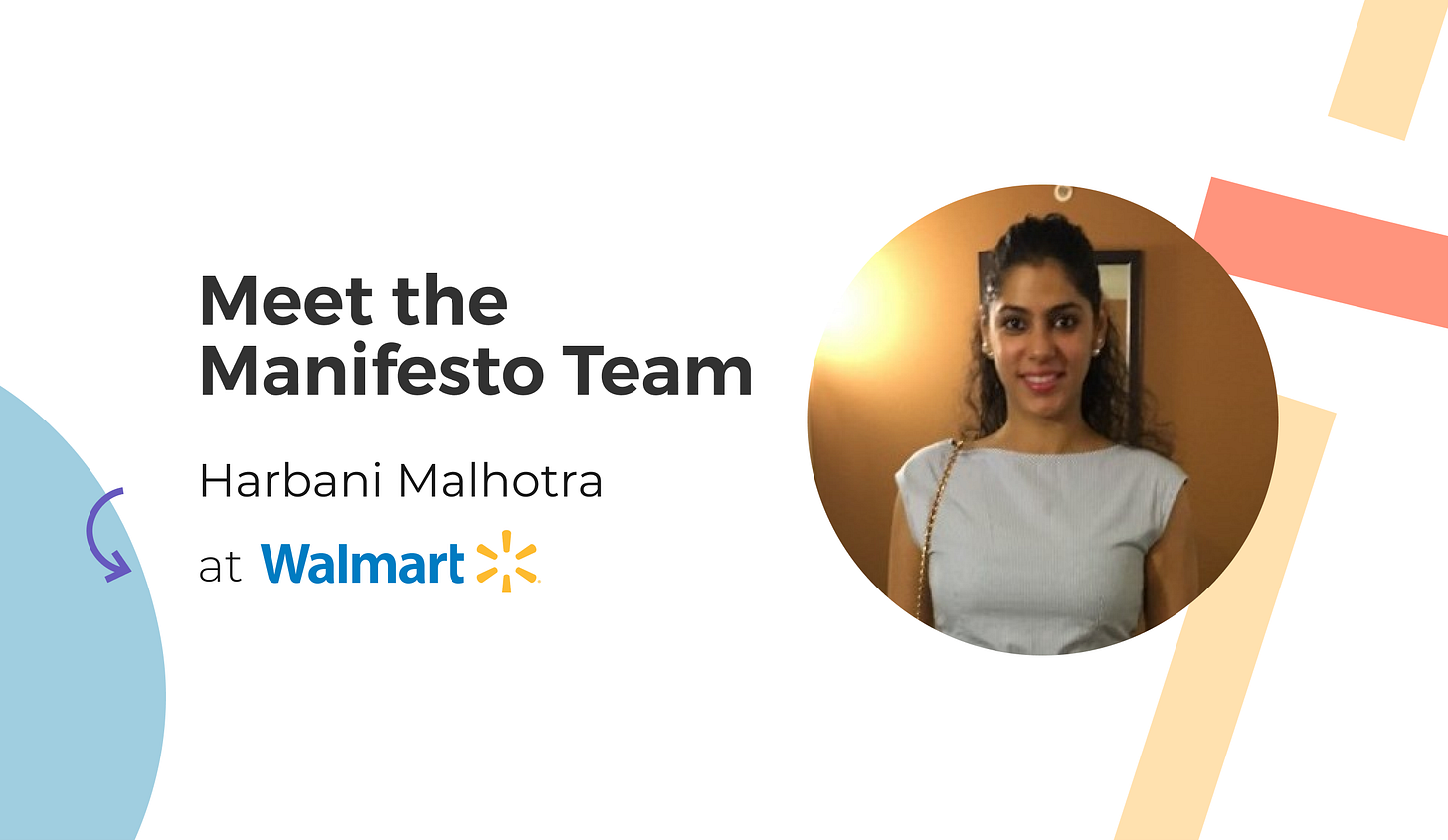The DE&I Duty of Product People
Reflections from the Manifesto Team on diversity, equity, and inclusion in product today
Diversity, equity, and inclusion (DE&I) is without question a paramount concern of our times. And it was clear from the start that the Product Management Manifesto must take this under close consideration.
A few weeks ago we asked each member of the working group to reflect on this topic, asking:
In what ways do you hope to see greater DE&I reflected in the work and contribution of Product People?
Their responses cover a cross-section of viewpoints, reflecting the diverse nature of the working group itself and offering a window into core questions around DE&I that affect all Product People.
Here’s a closer look at what they had to say about the responsibility that falls on the Product Community to advance DE&I in our field today.
A Unique Responsibility
The team zeroed in on an important truth: DE&I is an especially important issue for product creators.
Why? Because Product People’s decisions have a big impact, and so come with special responsibility. Felix Watson Jr. of Google explains: “Product Managers hold significant influence over products that billions of people use every day. They often decide what gets built and when it’s fit to be released into the world.”
How a product is made can privilege some, and disadvantage others. Recent examples of racial bias in facial recognition technology algorithms attest to the consequences of non-inclusive product design.
As Marily Nika of Google says, “inclusivity matters and PMs have the power to make a difference and fight bias. Product Managers should identify bias traps and embed bias-busting strategies at key points of design and product development in order to create more inclusive and innovative products.”
Product People are uniquely positioned to impact DE&I by virtue of their decision-making authority. With this power comes great responsibility that’s not to be taken lightly.
DE&I Makes for Better Products
The team also pointed out a core advantage of embracing DE&I. Quite simply, it leads to better products.
Diego Granados of Microsoft explained he’s seen firsthand how “the diversity of ideas are beneficial to the product and, ultimately, the business. I expect PMs to be advocates for DE&I knowing that this diversity in the team and their ideas is the perfect recipe for amazing products and incredible teams.”
It’s been proven time and again that diversity leads to better financial results, innovation, and competitiveness. Harvard Business Review even looked at research showing diverse teams are “smarter” and more fact-driven.
Harbani Malhotra of Walmart emphasized: “Inclusion and belonging will help build products with purpose, determining how and what problems we pick to solve and how we choose to solve them.”
Smarter, more profitable, and purpose-driven teams? This is the perfect recipe indeed!
The What & Who of DE&I in Product
Since DE&I comes in many forms, what types are needed most in product today? The working group’s answer: all types.
They called out the need for diversity on multiple fronts: race, ethnicity, gender, ability, sexual orientation, experience, and diversity of thought.
Diversity must also be taken into consideration across multiple stakeholder groups, including:
Product People and teams they build
Teams that work with Product People
Customers and users
User research study participants
Leadership / C Suite
Regarding users, Marily reminds us of an important truth: “ultimately, PMs have a responsibility to the users as they represent them within a company.” We can never forget that our products must reflect the users they’re built for.
Victoria Ku of Airbnb zeroed in on the importance of diversity across a company’s org chart, saying, “I hope to see more underrepresented minorities (URMs) in the industry, with equal representation at the leadership level. While equal representation is not a guaranteed solution for an egalitarian society, it is one area of contribution, in addition to making sure diverse backgrounds and voices are also represented at all levels.”
Victoria brings up a key point here when it comes to professional background, echoed by the rest of the working group. The tendency to hire a certain “profile” can severely limit DE&I within product teams from the onset.
Breaking the Silicon Valley Stereotype
The team cautioned against the cycle of overreliance on the stereotypical Silicon Valley persona.
Ashok Bania of Expectful shared, “in my observation, willingness trumps ability—I have personally seen numerous examples of individuals without Ivy League degrees, without data science or engineering backgrounds flourish and prosper to be great product managers.”
Yet he points out the urgency for Product Leaders to “hire PMs beyond the stereotypical profiles that are rife in Silicon Valley. We need to take risks and give people more chances —we need to break the cycle.”
Sparsh Agarwal of Earnin sees it as “a chicken and egg problem—companies want PMs to hit the ground running and have prior experience to be successful. But how does an individual with no prior experience break into their first PM role? As technology becomes ubiquitous, we need to ensure that product teams reflect the diversity of thought, experience, race, gender, etc of our user base.”
This is an unfortunate reality. Too often, those without the so-called “right background” continue to face barriers to simply enter our field.
For example, the 2021 State of Women in Product Management Report calls out a lack of technical degrees as a disadvantage to women in recruiting. They lay bare that “women are less likely to have studied business, engineering, or computer science, which disadvantages them during recruiting. If human resource algorithms primarily search resumes for those degrees, they overlook a rich pool of candidates.”
There are 3 key takeaways here for product folks:
#1: Question your assumptions on who to hire and what backgrounds are required, so that we can overturn inclusion barriers like these.
#2: Approach algorithms with DE&I in mind! Algorithms are notorious for having coding that reflects human biases.
#3: In the words of our very own Andrew Nguyen of Bark, remember:
“The opportunity and experience granted to one Product Person can be life-changing, with the potential to amplify opportunities the people they serve (teammates and customers alike).”
What Product People Must Do More Of
What’s the DE&I call to action as this team sees it?
First, recognize the duty each of us has to embrace DE&I in our work. This responsibility extends to our users, teams, companies, and products themselves.
To uphold this DE&I duty, we should:
Advocate for DE&I.
Hire for DE&I.
Build with DE&I in mind.
Patrol to “uncover gaps” in DE&I and work to close them.
Support & lift others up.
Take risks & give people more chances.
Second, challenge ourselves to look beyond the go-to assumptions of Product Management to strive for a more DE&I-centric approach. And this is where the team hopes to help you out...
They’re building the Product Management Manifesto right now with DE&I in mind. It’s front and center in their discussions of principles to guide product people throughout their journeys—both today, and into the future. Stay tuned for the full manifesto launching this fall!
We’d love to hear your thoughts!













Thank you for this post! The barriers are real. I'm glad to hear these voices advocating for diversity, inclusion, and non-traditional backgrounds in product <3